bigbendmarine
5 year old buck +
I'll start with the one which I have the least confidence. A local cemetery has these planted on both sides of their entrance. Before the visit to this cemetery I'd never seen this species. My guess based on bit of online research is "ring-cupped oak" or "blue Japanese oak" / Quercus glauca. The one thing making me the most skeptical of the ID is that the trees in the cemetery are fair sized (though not giant) and would be on the large size for the species. If anyone can ID with fair confidence, curious how much deer like them, as the trees in the cemetery were dropping tons when I took the photos.
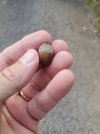
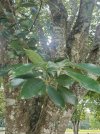
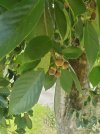
Next oak is one I believe is likely an overcup oak / Quercus lyrata? There are about a dozen of these trees that have recently been dropping at an Ace Hardware near my home. Few interesting things I noticed about the acorns. The meat inside is fairly sweet / not very bitter, fitting the overcup white oak typing. Also interesting is that even for the nuts damaged / that look older the meat inside seems to be better preserved / still white in comparison to other acorns in our area that much more quickly rot when damaged. The bark on the tree looks very much like white oak and is quite shaggy, and interestingly (at least to me) the leaves have quite a bit of variation with some more pointy while other leafs on the same tree are more rounded.
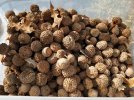
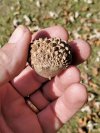
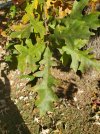
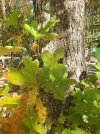
If I'm right on the overcup ID, I do have a few questions about the desirability of the acorns especially in comparison to Swamp Chestnut White oak / Quercus michauxii. Between my home and a pond on our place I have several natural stands of swamp chestnut white oaks and have successfully grown several from seed and planted them in more open spots on my property, such as near the edges of several food plots (few members might remember I actually grew two from whole acorns pulled out of the stomach of the nicest buck I've killed to date). With the two oaks sharing very similar ranges and liking similar terrain, does anyone see any value in growing at least a few overcup oaks? If for no other reason then the caps alone I can't imagine the deer will prefer them over the swamp chestnut white oaks, but that said the one reason I can see possibly planting a few is that I CAN see hogs not minding the caps at all and possibly beating the deer to them / making for a tree that I could strategically plant at certain spots to target hogs. For reference sake, here's a picture showing just how large the swamp chestnut white oak acorns get at our place. Darn near golf ball sized.
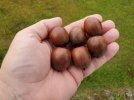



Next oak is one I believe is likely an overcup oak / Quercus lyrata? There are about a dozen of these trees that have recently been dropping at an Ace Hardware near my home. Few interesting things I noticed about the acorns. The meat inside is fairly sweet / not very bitter, fitting the overcup white oak typing. Also interesting is that even for the nuts damaged / that look older the meat inside seems to be better preserved / still white in comparison to other acorns in our area that much more quickly rot when damaged. The bark on the tree looks very much like white oak and is quite shaggy, and interestingly (at least to me) the leaves have quite a bit of variation with some more pointy while other leafs on the same tree are more rounded.




If I'm right on the overcup ID, I do have a few questions about the desirability of the acorns especially in comparison to Swamp Chestnut White oak / Quercus michauxii. Between my home and a pond on our place I have several natural stands of swamp chestnut white oaks and have successfully grown several from seed and planted them in more open spots on my property, such as near the edges of several food plots (few members might remember I actually grew two from whole acorns pulled out of the stomach of the nicest buck I've killed to date). With the two oaks sharing very similar ranges and liking similar terrain, does anyone see any value in growing at least a few overcup oaks? If for no other reason then the caps alone I can't imagine the deer will prefer them over the swamp chestnut white oaks, but that said the one reason I can see possibly planting a few is that I CAN see hogs not minding the caps at all and possibly beating the deer to them / making for a tree that I could strategically plant at certain spots to target hogs. For reference sake, here's a picture showing just how large the swamp chestnut white oak acorns get at our place. Darn near golf ball sized.


